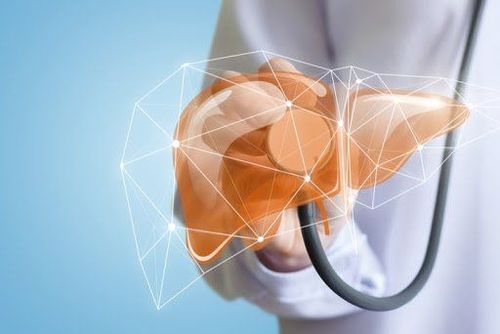This is an automatically translated article.
Lateral otitis media is inflammation around the lateral vein, in the wall, or complete occlusion of the lateral vein caused by the ear. The disease, if not treated promptly, can cause many dangerous intracranial complications such as meningitis, epidural abscess or widespread thrombophlebitis.
1. The role of the venous system
Veins, also known as veins, are responsible for transporting blood from capillaries with low oxygen back to the heart. The venous system consists of four main types: pulmonary veins, systemic veins, superficial veins and deep veins.
The role of the venous system is to carry oxygen-depleted blood from the capillaries back to the heart, regulate body temperature and store blood. With the function of regulating body temperature, veins will dilate when the temperature rises and the skin will be cooler.
With the function of bringing blood back to the heart, the veins must resist the gravity from the environment and the task of helping the blood move smoothly and not backflow will be due to the valves.
However, if for some reason the valves malfunction, it will cause the blood to flow back and increase pressure on the veins, causing varicose veins such as:
Varicose veins of the legs Varicose veins Esophageal varices Varicose veins of the lower extremities In addition, some diseases can be encountered in veins such as: lateral vein inflammation, deep vein thrombosis, leg vein failure...
2. Inflammation of the lateral vein caused by the ear and its causes
Lateral phlebitis is an inflammatory disease of the veins surrounding, in the wall, or completely occluded by the lateral veins. The lateral vein is part of the intracranial vein and has the highest rate of inflammation because of its large diameter, rather tortuous path, and slow blood flow rate.
Causes of ear vein inflammation can be mentioned as follows:
Caused by acute and chronic mastoiditis, usually at the time of re-inflammation when cholesteatoma is present. Injuries from mastectomy Caused by certain bacteria such as staphylococcus, streptococcus, pneumococcus or other anaerobic bacteria Intracranial complications of the ear can also cause phlebitis of the ear. The lateral vein disease caused by the ear can be combined with meningitis, causing cerebellar abscess, lung abscess and dangerous for the patient.
About the development mechanism of the disease, it usually comes from lesions in the ear, mastoid bone and to the veins by routes such as adjacent lines, blood vessels, from another inflammatory site or through fractures. .
Patients with lateral vein inflammation due to the ear often have symptoms such as: After high fever, infection, nausea, localized headache, purulent ear...

Viêm tĩnh mạch bên do tai không được điều trị kịp thời có thể gây ra nhiều biến chứng nguy hiểm
3. Anatomy of lateral phlebitis
Through the analysis of the state of lateral phlebitis can be divided into:
Perivenous inflammation: The bones of the lateral vein trough are inflamed with pus and are concentrated in abscesses between the bone fragment and the vein. Although the external surface of the lateral vein is rough, white pseudomembranous may be present, but the vein wall is not damaged. Inflammation of the vein wall: When the vein wall has been damaged, it is often thickened, rough, and dark in color; However, the blood flow in the veins can still circulate normally, unimpeded. Inflammation in the veins: There is a blood clot consisting of the platelet layer, the layer of blood cells adheres to the wall and tends to gradually encroach into the vessel lumen. In addition, the red layer of platelets may shed and form a thrombus that floats in the lumen and may cause a distal venous occlusion. Thrombophlebitis: Thrombophlebitis includes complete and incomplete occlusion caused by blood clots that impede blood flow. The most noticeable manifestation of thrombophlebitis is aspiration of the veins in the lumen, showing no blood and a collapsed vein in the lower segment. Venous necrosis: This is a condition in which a blood clot clogs an infected vein that becomes pus and causes vein necrosis. Lateral phlebitis due to the ear is a rather dangerous disease because the vein is located near the brain and can cause many complications that directly affect the brain. Measures used to diagnose lateral vein inflammation include: Clinical examination and paraclinical tests such as blood tests, ultrasound, computed tomography ...
Depending on the extent of the disease, the doctor The specialist will have the appropriate treatment regimen for the patient such as using antibiotics, anticoagulants, surgery to remove the blood clot, placing a filter into the blood vessel to prevent the clot from traveling to lung or treat the cause of lateral phlebitis.
Please dial HOTLINE for more information or register for an appointment HERE. Download MyVinmec app to make appointments faster and to manage your bookings easily.













